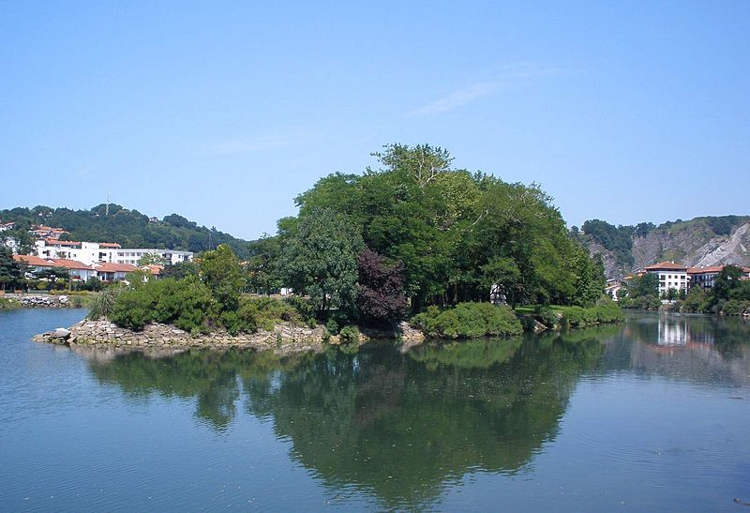Pheasant Island is a tiny island on the border between Spain and France that alternates ownership status between the two countries every six months.
Located on the Bidasoa River, the natural border between Spain and France, Pheasant Island is a deserted patch of land with a rather fascinating history and political status. It might not look like much today, but hundreds of years ago it was where the Thirty Years’ War between Spain and France finally ended. The two countries sent a couple of their most important dignitaries to the island to negotiate, with their respective armies gathered on both sides of the Bidasoa, in case things went wrong. 11 years and 24 summits later, a deal was struck, and Pheasant Island became the world’s smallest condominium, under the joint sovereignty of the two nations.

Photo: Zarateman/Wikimedia Commons
When France and Spain decided to end their long war, Pheasant Island became a metaphor for long-lasting peace. French King Louis XIV married the daughter of King Philip IV, Maria Theresa of Spain on the tiny island, a monument to commemorate the historic agreement was built in the center of it, and most importantly, it was decided that, from that point on, both countries would have joint custody of the territory for six months out of a year.
Since 1660, when the landmark agreement was struck, Pheasant Island has belonged to Spain from 1 February to 31 July of each year, and to France for the other half of the year. Visitors are only allowed onto the island on rare occasions, like the bi-annual handover ceremony, or on rare heritage tours. Other than that, employees of the municipal governments of Irun, in Spain, and Hendaye, in France, will venture onto Pheasant Island every six months for cleaning and gardening work.
The Naval Commands of both Spain and France are responsible for monitoring Pheasant Island, so during their six months of annual ownership crews will land on it every five days.






